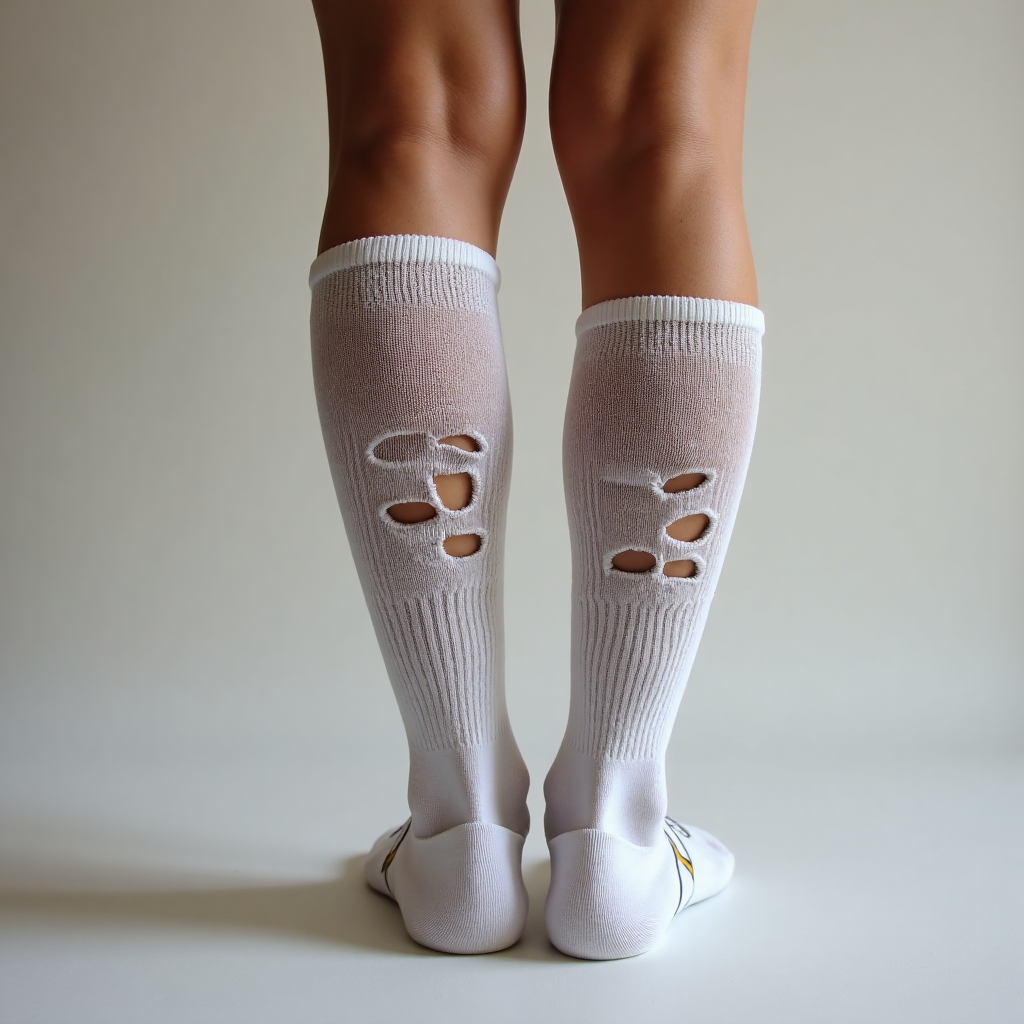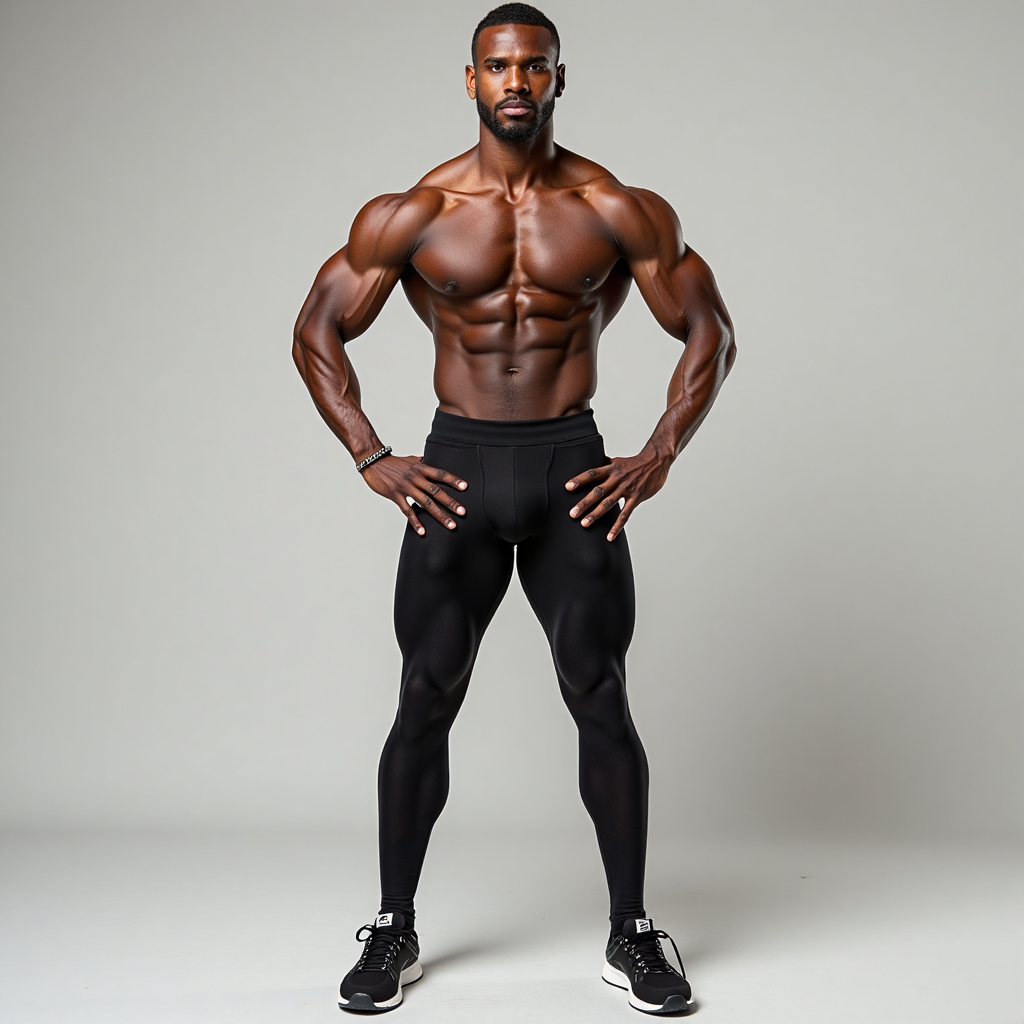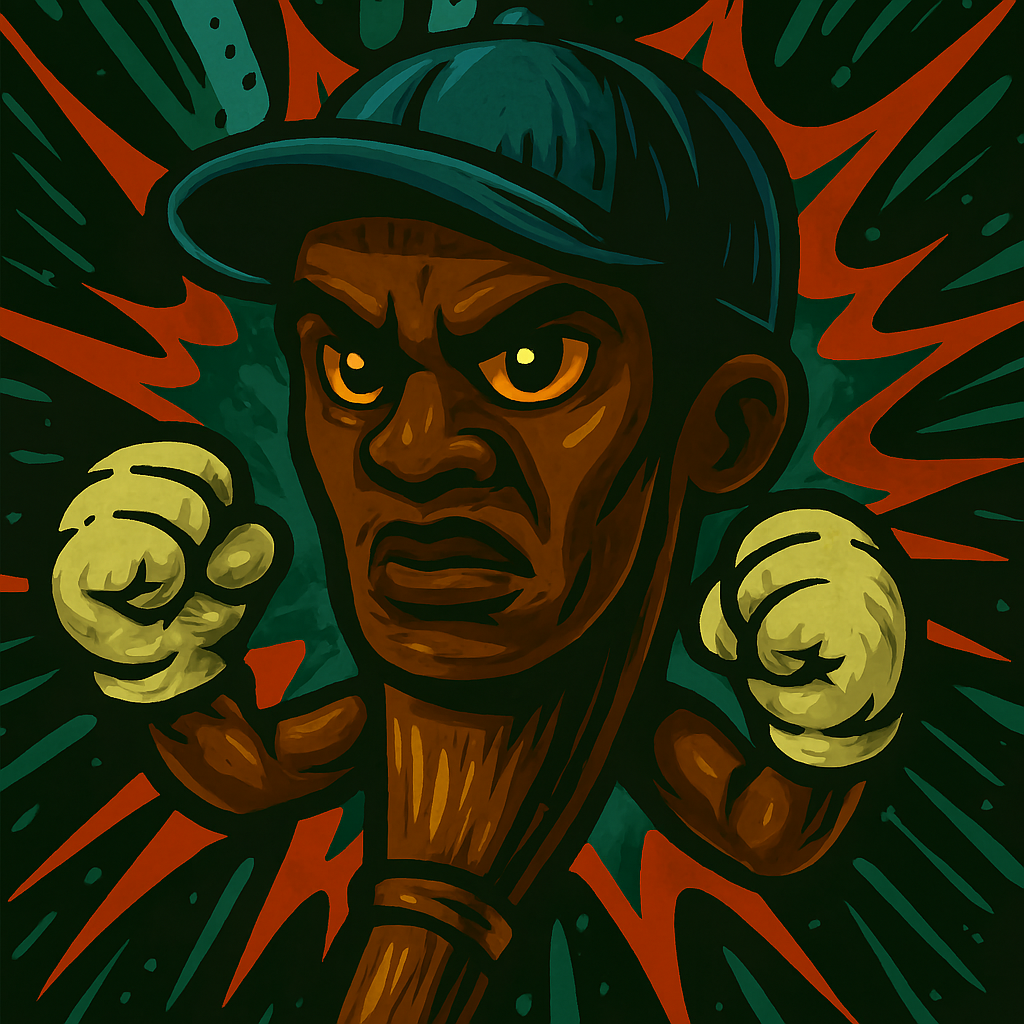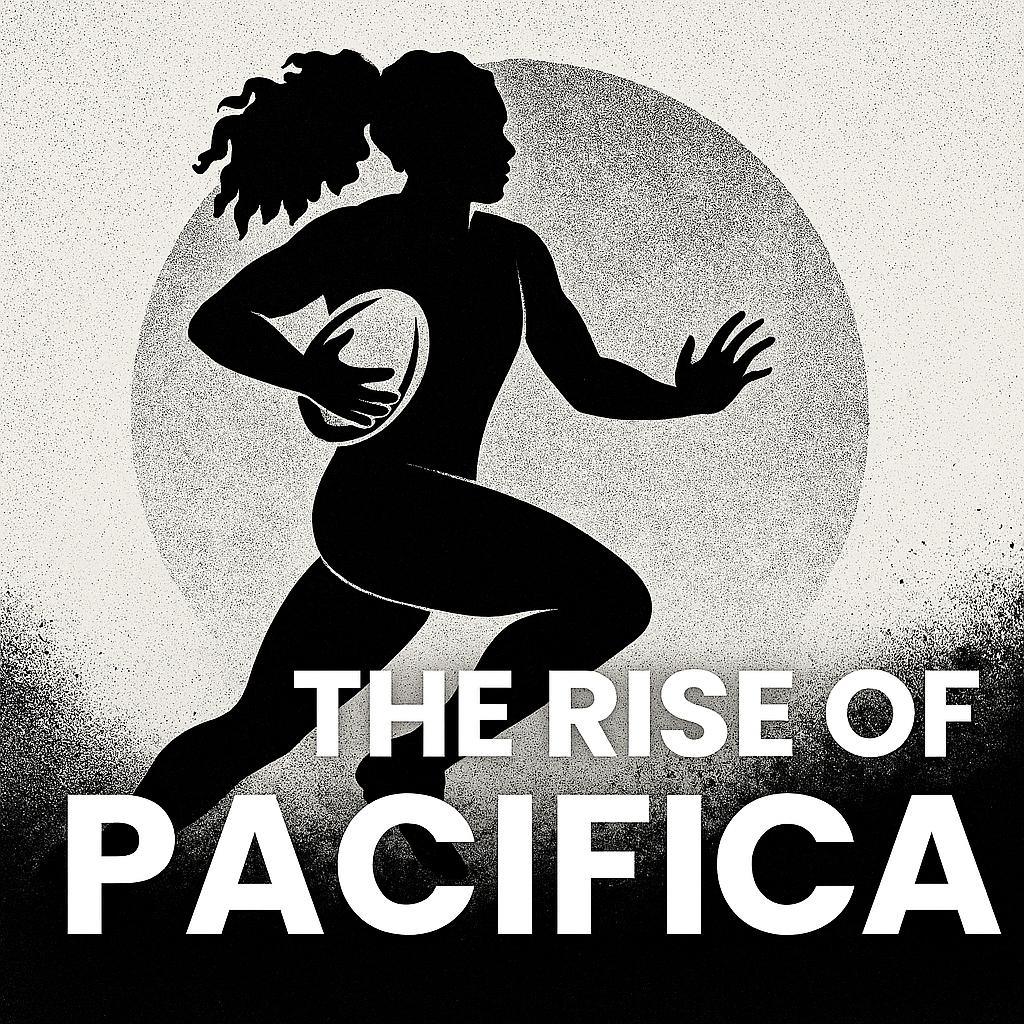Why Do Athletes Cut Socks
Sports Players Cut Holes In Socks For Powerful Comfort Performance
In recent years, audiences have noticed a curious detail on the field – professional athletes, especially footballers, often appear with socks that have deliberate holes cut into them. This practice is not random damage but a purposeful adjustment made by players to enhance their comfort and performance. The tight polyester blend used in modern sports socks can restrict circulation, create pressure on calf muscles, and even contribute to cramping. By cutting holes, players reduce tension, improve blood flow, and allow muscles to expand naturally during intense activity. Beyond physiology, the trend also carries elements of personal expression and ritual. Some athletes adopt it as part of their identity, while others follow teammates or role models who popularized the practice.
Performance Pressure And Sock Design
Modern sports socks are designed for durability, compression, and moisture control. However, compression can sometimes become excessive, particularly around the calves. Athletes report discomfort, restricted blood flow, and muscle tightness. Cutting holes relieves this pressure, allowing calves to expand naturally during sprints and sudden movements. This adaptation is especially common in football, where explosive acceleration and constant running place strain on the lower legs. The practice has spread across leagues, with notable players such as Jude Bellingham and Bukayo Saka adopting it. Physiologists note that while not medically endorsed, the modification provides immediate relief and psychological reassurance.
| Factor | Impact On Athlete | Reason For Sock Cutting |
|---|---|---|
| Compression | Restricts calf expansion | Holes reduce pressure |
| Circulation | Blood flow limited | Open fabric improves flow |
| Cramping | Higher risk | Relief lowers tension |
| Comfort | Socks feel tight | Holes create flexibility |
| Identity | Personal style | Visible ritual |
Cultural Adoption And Player Identity
The trend is not only functional but symbolic. Athletes often adopt visible rituals that set them apart, and sock-cutting has become one such marker. Fans notice the holes and associate them with individuality, toughness, or rebellion against rigid uniform standards. Managers and commentators have debated whether the practice should be allowed, with some criticizing it as unprofessional. Yet, players argue that performance comfort outweighs aesthetic concerns. The spread of the trend demonstrates how small details can become cultural markers in sport.
- Enhances individuality on the field
- Creates visible distinction for fans
- Reflects rebellion against uniform rigidity
- Sparks debate among managers and commentators
- Provides psychological reassurance
- Reinforces team identity when multiple players adopt it
- Becomes part of athlete branding
- Signals toughness and resilience
- Gains media attention during matches
- Evolves into a recognized sporting ritual

Physiological Relief And Muscle Function
Athletes rely heavily on calf muscles for acceleration, balance, and endurance. Tight socks can apply pressure that interferes with natural muscle expansion. By cutting holes, players reduce external compression, allowing muscles to contract and relax freely. This adjustment can lower the risk of cramps and improve comfort during long matches. Sports scientists explain that while compression gear can aid recovery, excessive tightness during play may hinder performance. Sock-cutting represents a player-driven solution to a design flaw in modern kits.
| Muscle Function | Effect Of Tight Socks | Benefit Of Holes |
|---|---|---|
| Expansion | Restricted | Freer movement |
| Circulation | Limited | Improved blood flow |
| Cramp Risk | Increased | Reduced tension |
| Comfort | Decreased | Enhanced flexibility |
| Endurance | Compromised | Sustained performance |
Psychological Comfort And Ritual
Beyond physical relief, the act of cutting holes carries psychological weight. Athletes often rely on rituals to prepare mentally for competition. Sock-cutting becomes part of this preparation, signaling readiness and control. The visible holes remind players that they have customized their gear to suit their needs. This sense of autonomy can boost confidence and reduce anxiety. Rituals in sport often blend practicality with symbolism, and sock-cutting fits this pattern perfectly.
- Provides mental reassurance
- Reinforces sense of control
- Acts as a pre-game ritual
- Boosts confidence through customization
- Reduces anxiety about cramps
- Symbolizes readiness for competition
- Connects athletes to role models who use the practice
- Creates consistency across matches
- Enhances focus by removing discomfort concerns
- Integrates into broader sporting culture
Sports Players Cutting Holes In Socks – Extended Analysis Of Function And Symbolism
Material Science And Sock Construction
Sports socks are typically made from synthetic blends such as polyester, nylon, and elastane. These materials are chosen for durability, moisture-wicking, and elasticity. However, the elasticity can create excessive compression around the calves. Athletes often report that the tightness restricts blood flow and causes discomfort during prolonged activity. By cutting holes, they reduce the tension created by elastic fibers. This modification allows the sock to maintain its moisture control while reducing pressure. The practice highlights a gap between design intention and athlete experience, showing how real-world use can differ from laboratory testing.
| Sock Material | Intended Benefit | Problem Experienced | Reason For Cutting |
|---|---|---|---|
| Polyester | Durability | Stiffness | Relieves tension |
| Nylon | Flexibility | Excess compression | Reduces tightness |
| Elastane | Stretch | Restricts circulation | Improves blood flow |
| Cotton Blend | Comfort | Less common in pro sport | Rarely cut |
| Hybrid Fabrics | Moisture control | Pressure imbalance | Creates relief |
Historical Evolution Of Sporting Gear
The practice of modifying gear is not new. Athletes have long adjusted uniforms, shoes, and equipment to suit personal needs. Sock-cutting is part of this tradition, reflecting the constant tension between standardized kits and individual comfort. In earlier decades, sports players would roll down socks for grip and comfort or wear looser designs. Modern compression-focused socks revived the issue of tightness, leading to the current trend. This evolution shows how athlete-driven changes often influence future design standards. Manufacturers may eventually adapt by producing socks with adjustable compression zones.
- Athletes historically modified gear for comfort
- Sock-cutting continues this tradition
- Earlier players rolled socks down instead of cutting
- Modern compression revived calf discomfort
- Player-driven changes influence future designs
- Manufacturers adapt to athlete feedback
- Rituals evolve alongside gear adjustments
- Visible modifications become cultural markers
- Historical continuity strengthens legitimacy of practice
- Sock-cutting fits into broader gear evolution
Medical Perspectives On Circulation
Sports medicine specialists note that calf compression can both help and hinder performance. Controlled compression aids recovery by reducing swelling and improving venous return. However, excessive compression during play can restrict arterial blood flow and muscle expansion. Cutting holes provides immediate relief, though it is not a medically prescribed solution. Doctors caution that while the practice may reduce discomfort, it does not replace proper recovery protocols. Athletes often balance medical advice with personal experimentation, creating hybrid approaches to performance management.
| Medical Factor | Compression Benefit | Compression Risk | Hole-Cutting Effect |
|---|---|---|---|
| Venous Return | Improves recovery | Restricts arteries | Relieves pressure |
| Swelling | Reduced post-match | Increased during play | Allows expansion |
| Muscle Function | Supported after activity | Limited during sprints | Freer contraction |
| Injury Risk | Lower in recovery | Higher in play | Reduced cramp risk |
| Comfort | Enhanced post-game | Decreased mid-game | Improved flexibility |
Fan Perception And Media Coverage
Fans notice visible details on the field, and sock holes have become a talking point. Media outlets often highlight players with cut socks, sparking debates about professionalism and style. Some fans view it as a quirky ritual, while others see it as a distraction from uniform standards. The visibility of holes makes the practice symbolic, representing individuality and rebellion. Commentators sometimes criticize the look, but players defend it as necessary for comfort. The debate reflects broader tensions between tradition and innovation in sport.
- Fans notice visible sock holes
- Media highlights the practice during matches
- Sparks debates about professionalism
- Some fans see it as quirky ritual
- Others criticize uniform disruption
- Holes symbolize individuality
- Commentators question aesthetics
- Players defend comfort over appearance
- Debate reflects tradition versus innovation
- Visibility amplifies cultural impact
Biomechanics And Explosive Movements
Athletes rely on explosive calf movements for sprinting, jumping, and sudden changes of direction. Tight socks can interfere with these biomechanics by restricting muscle expansion. Cutting holes allows calves to expand naturally, improving efficiency in explosive actions. Sports scientists explain that unrestricted muscle movement reduces energy loss and enhances performance. While the effect may be subtle, athletes often report noticeable improvements in comfort and responsiveness. This biomechanical perspective reinforces the functional logic behind the practice.
| Biomechanical Action | Effect Of Tight Socks | Benefit Of Holes |
|---|---|---|
| Sprinting | Restricted expansion | Freer acceleration |
| Jumping | Limited calf contraction | Improved lift |
| Direction Change | Tightness reduces agility | Enhanced responsiveness |
| Endurance Running | Increased fatigue | Sustained comfort |
| Balance | Compression disrupts stability | Natural muscle function |
Athlete Autonomy And Equipment Customization
Professional athletes often seek autonomy over their gear, even when uniforms are standardized. Cutting holes in socks represents a small but significant act of customization. It allows players to adapt equipment to their bodies rather than conforming to rigid design. This autonomy reinforces confidence, as athletes feel they are in control of their comfort. The practice also reflects broader trends in sport, where personalization is increasingly valued. From custom boots to tailored jerseys, athletes push for individuality within team frameworks. Sock-cutting fits neatly into this narrative, showing how minor adjustments can carry symbolic weight.
| Customization Type | Example | Impact On Athlete | Cultural Meaning |
|---|---|---|---|
| Footwear | Custom boots | Improved fit | Personal branding |
| Jersey | Tailored size | Comfort | Identity expression |
| Socks | Holes cut | Reduced pressure | Ritual adaptation |
| Gloves | Modified grip | Enhanced control | Style marker |
| Headgear | Adjusted padding | Safety and comfort | Symbol of toughness |
Team Dynamics And Shared Practices
Sock-cutting is not always an individual act. In some teams, multiple players adopt the practice, creating a shared ritual. This collective behavior reinforces team identity and solidarity. When teammates see others cutting socks, they may follow suit, believing it enhances performance or simply aligns them with group culture. Shared rituals strengthen bonds and create a sense of unity. Coaches sometimes tolerate these practices, recognizing their psychological value. The spread of sock-cutting within teams demonstrates how small details can become collective traditions.
- Reinforces team identity
- Creates shared ritual among players
- Strengthens bonds through visible similarity
- Encourages adoption by younger athletes
- Provides psychological reassurance across the squad
- Coaches tolerate for morale reasons
- Ritual spreads through peer influence
- Becomes part of team culture
- Symbolizes solidarity on the field
- Enhances collective confidence
Commercial Influence And Kit Manufacturing
Manufacturers design socks with compression zones to meet performance standards. However, athlete modifications like sock-cutting highlight gaps in design. Companies monitor these trends to adapt future products. Some brands have begun experimenting with socks that feature adjustable compression or breathable panels. Commercial influence ensures that athlete-driven practices eventually shape mainstream gear. Sock-cutting may inspire new product lines marketed as “flex-comfort” or “adaptive fit.” This demonstrates the feedback loop between athlete behavior and commercial innovation.
| Commercial Factor | Current Design | Athlete Response | Future Adaptation |
|---|---|---|---|
| Compression Zones | Tight fit | Holes cut | Adjustable compression |
| Durability | Strong fibers | Excess stiffness | Flexible blends |
| Moisture Control | Polyester blends | Maintained | Enhanced breathability |
| Branding | Uniform look | Modified by players | Marketed individuality |
| Innovation | Standardized kits | Athlete-driven change | Adaptive gear lines |
Symbolism And Rebellion Against Uniformity
Uniforms are designed to create cohesion, but athletes often resist strict conformity. Cutting holes in socks becomes a subtle act of rebellion. It signals individuality within a collective framework. Fans interpret these visible changes as signs of toughness or defiance. Symbolism plays a powerful role in sport, where small details can carry outsized meaning. Sock-cutting thus becomes more than a functional adjustment; it is a statement of identity. Athletes balance the need for comfort with the desire to stand out, and this practice embodies that balance.
- Represents rebellion against strict uniformity
- Signals individuality within team framework
- Fans interpret as toughness or defiance
- Symbolism amplifies cultural meaning
- Small details carry outsized significance
- Athletes balance comfort with identity
- Ritual becomes visible marker of uniqueness
- Sparks debate about professionalism
- Reinforces athlete autonomy
- Embodies tension between conformity and individuality
Injury Prevention And Muscle Health
Athletes constantly manage the risk of injury. Tight socks can contribute to calf strain, cramps, and discomfort. Cutting holes reduces external pressure, lowering the risk of muscle fatigue. Sports medicine specialists note that while not a cure, the practice can provide short-term relief. Athletes often combine sock-cutting with other injury prevention strategies, such as stretching and hydration. This layered approach reflects the complexity of performance management. Sock-cutting thus becomes part of a broader toolkit for maintaining muscle health.
| Injury Risk | Cause | Effect Of Tight Socks | Hole-Cutting Benefit |
|---|---|---|---|
| Calf Strain | Overuse | Increased pressure | Reduced tension |
| Cramping | Poor circulation | Higher risk | Improved blood flow |
| Fatigue | Restricted expansion | Accelerated onset | Sustained comfort |
| Swelling | Compression imbalance | Exacerbated | Relief provided |
| Muscle Tightness | Elastic restriction | Persistent discomfort | Freer contraction |

Psychological Ritual And Pre-Game Preparation
Athletes often rely on rituals to prepare mentally for competition. Sock-cutting becomes part of this ritual, signaling readiness and control. The act of customizing gear provides reassurance that discomfort will not interfere with performance. Rituals in sport blend practicality with symbolism, and sock-cutting fits this pattern. Players may cut holes before every match, reinforcing consistency and focus. This repetition strengthens psychological resilience, helping athletes enter competition with confidence.
- Provides reassurance before competition
- Reinforces sense of control
- Acts as consistent pre-game ritual
- Reduces anxiety about cramps
- Symbolizes readiness for play
- Connects athletes to role models
- Creates consistency across matches
- Enhances focus by removing discomfort concerns
- Strengthens psychological resilience
- Integrates into broader ritual culture
Historical Parallels In Sporting Rituals
Throughout history, athletes have modified their gear to suit personal needs. In ancient sports, competitors often adjusted sandals or bindings to improve comfort. In the early days of football, players rolled down socks or wore looser designs to reduce calf pressure. Sock-cutting continues this tradition, representing a modern version of gear modification. These parallels show that athlete-driven changes are not new but part of a long lineage of adaptation. Rituals evolve alongside technology, and sock-cutting fits into this continuum. The practice demonstrates how athletes balance tradition with innovation, shaping the culture of sport.
| Era | Gear Modification | Purpose | Modern Parallel |
|---|---|---|---|
| Ancient Greece | Adjusted sandals | Comfort in competition | Sock-cutting |
| Early Football | Rolled socks down | Reduced calf pressure | Sock-cutting |
| Boxing | Customized wraps | Wrist support | Modern tape rituals |
| Athletics | Altered spikes | Improved traction | Shoe customization |
| Modern Football | Holes in socks | Relieve compression | Visible ritual |
Media Narratives And Public Debate
Media coverage amplifies the visibility of sock-cutting. Commentators often highlight players with holes in their socks, sparking debates about professionalism and style. Some argue that the practice undermines uniform standards, while others defend it as necessary for comfort. The visibility of holes makes the practice symbolic, representing individuality and rebellion. Media narratives shape public perception, turning a minor adjustment into a cultural talking point. This demonstrates how small details can gain outsized attention in the world of sport.
- Media amplifies visibility of sock holes
- Commentators highlight practice during matches
- Sparks debates about professionalism and style
- Critics argue it undermines uniform standards
- Supporters defend comfort over aesthetics
- Visibility makes practice symbolic
- Represents individuality and rebellion
- Media narratives shape public perception
- Minor adjustment becomes cultural talking point
- Demonstrates outsized attention to small details
Physiological Mechanics Of Compression
Compression gear is designed to support circulation and muscle recovery. However, excessive compression during play can restrict arterial blood flow and muscle expansion. Athletes often report discomfort and cramping when socks are too tight. Cutting holes provides immediate relief, allowing calves to expand naturally. Sports scientists explain that unrestricted muscle movement reduces energy loss and enhances performance. While compression aids recovery post-match, during play it can hinder biomechanics. Sock-cutting represents a player-driven solution to this imbalance.
| Physiological Factor | Compression Benefit | Compression Risk | Hole-Cutting Effect |
|---|---|---|---|
| Circulation | Improves venous return | Restricts arteries | Relieves pressure |
| Recovery | Reduces swelling | Not relevant mid-game | Focus remains on play |
| Muscle Expansion | Supported post-match | Limited during sprints | Freer contraction |
| Cramp Risk | Lower after activity | Higher during play | Reduced tension |
| Comfort | Enhanced in recovery | Decreased mid-game | Improved flexibility |
Fan Psychology And Symbolic Interpretation
Fans interpret visible rituals as markers of identity. Sock-cutting becomes a symbol of toughness, individuality, or rebellion. Supporters often associate the practice with specific players, reinforcing their image. The visibility of holes creates a narrative that extends beyond function. Fans may imitate the practice in amateur settings, believing it enhances performance or connects them to professional idols. This demonstrates how rituals spread from elite sport to grassroots culture. Symbolic interpretation amplifies the cultural impact of sock-cutting.
- Fans interpret sock holes as toughness
- Symbolizes individuality and rebellion
- Associated with specific players
- Reinforces athlete image
- Visibility creates narrative beyond function
- Fans imitate in amateur settings
- Belief in performance enhancement spreads
- Connects supporters to professional idols
- Ritual spreads from elite to grassroots
- Amplifies cultural impact
Commercial Adaptation And Future Design
Manufacturers monitor athlete-driven practices to adapt future products. Sock-cutting highlights a gap in design, prompting companies to experiment with adjustable compression zones. Some brands may introduce socks with breathable panels or flexible fabrics. Commercial adaptation ensures that athlete feedback shapes mainstream gear. Sock-cutting could inspire new product lines marketed as “adaptive fit” or “flex-comfort.” This demonstrates the feedback loop between athlete behavior and commercial innovation. Future designs may eliminate the need for cutting altogether.
| Commercial Factor | Current Design | Athlete Response | Future Adaptation |
|---|---|---|---|
| Compression Zones | Tight fit | Holes cut | Adjustable compression |
| Durability | Strong fibers | Excess stiffness | Flexible blends |
| Moisture Control | Polyester blends | Maintained | Enhanced breathability |
| Branding | Uniform look | Modified by players | Marketed individuality |
| Innovation | Standardized kits | Athlete-driven change | Adaptive gear lines |
Psychological Resilience And Ritual Consistency
Athletes rely on rituals to build psychological resilience. Sock-cutting for certain sports and people becomes part of this ritual identity by reinforcing consistency and focus. The act of customizing gear provides reassurance that discomfort will not interfere with performance. Repetition strengthens mental preparation, helping athletes enter competition with confidence. Rituals blend practicality with symbolism, and sock-cutting fits this pattern. Players may cut holes before every match, creating a sense of continuity. This consistency enhances psychological resilience, supporting performance under pressure.
- Reinforces consistency and focus
- Provides reassurance against discomfort
- Strengthens mental preparation
- Enhances confidence before competition
- Ritual blends practicality with symbolism
- Holes cut before every match
- Creates sense of continuity
- Supports performance under pressure
- Builds psychological resilience
- Integrates into broader ritual culture
Comparative Analysis With Other Rituals
Sock-cutting is one of many rituals athletes adopt. These rituals serve both functional and symbolic purposes. Comparative analysis shows that sock-cutting fits into a broader pattern of customization. Athletes seek comfort, identity, and psychological reassurance through visible modifications. Each ritual reflects the tension between uniform standards and personal autonomy. Sock-cutting stands out because of its visibility and cultural debate, but it shares roots with other practices.
| Ritual | Purpose | Symbolism | Visibility |
|---|---|---|---|
| Sock-Cutting | Relieve compression | Individuality | High |
| Wrist Taping | Support joints | Toughness | Medium |
| Lucky Boots | Comfort and superstition | Identity | High |
| Jersey Adjustment | Fit and comfort | Style | Medium |
| Headband Wearing | Sweat control | Focus | High |
Cultural Transmission Across Leagues
Sock-cutting has spread across leagues and countries. Players in different competitions adopt the practice, influenced by role models and teammates. Cultural transmission demonstrates how rituals move beyond local contexts. The visibility of holes makes the practice recognizable across borders. Fans notice similarities between players in different leagues, reinforcing the trend. This transmission reflects the global nature of sport, where rituals spread quickly through media and social networks. Sock-cutting thus becomes a global phenomenon.
- Practice spreads across leagues
- Influenced by role models and teammates
- Ritual moves beyond local contexts
- Visibility makes practice recognizable globally
- Fans notice similarities across competitions
- Trend reinforced by media coverage
- Reflects global nature of sport
- Ritual spreads through social networks
- Becomes global phenomenon
- Demonstrates cultural transmission
Future Implications For Sports Culture
Sock-cutting may influence future sports culture in multiple ways. Manufacturers may adapt designs to eliminate the need for cutting. Fans may continue to imitate the practice, reinforcing its symbolic meaning. Media coverage will likely sustain debates about professionalism and individuality. The practice demonstrates how small details can shape cultural narratives. Future implications include greater emphasis on athlete autonomy, customization, and ritual. Sock-cutting may fade as designs evolve, but its cultural impact will remain significant.
| Future Implication | Likely Outcome | Cultural Impact |
|---|---|---|
| Manufacturer Adaptation | Adjustable socks | Reduced need for cutting |
| Fan Imitation | Continued practice | Reinforced symbolism |
| Media Coverage | Sustained debate | Visibility maintained |
| Athlete Autonomy | Greater customization | Identity strengthened |
| Ritual Evolution | New practices emerge | Cultural continuity |
Grassroots Influence And Amateur Adoption
The visibility of sock-cutting in professional sport has influenced amateur players. Young athletes often imitate their idols, believing that cutting holes enhances performance. In grassroots football, the practice has spread rapidly, becoming a symbol of connection to elite culture. Coaches sometimes discourage it, citing uniform standards, but players persist. The ritual provides psychological reassurance, even if the physiological benefits are minimal at lower levels. This demonstrates how elite practices filter down into community sport, shaping identity and culture across tiers.
| Level Of Play | Adoption Rate | Reason For Cutting | Cultural Impact |
|---|---|---|---|
| Professional | High | Relieve compression | Visible ritual |
| Semi-Pro | Moderate | Imitation of idols | Identity reinforcement |
| Amateur | Growing | Psychological reassurance | Connection to elite |
| Youth | Increasing | Influence of role models | Cultural transmission |
| Recreational | Variable | Style and comfort | Symbolic participation |
Symbolic Parallels In Other Sports
Sock-cutting is not unique to football. Other sports feature similar rituals of gear modification. In basketball, players adjust wristbands or cut sleeves for comfort. In rugby, athletes tape socks or shorts to prevent slippage. In athletics, runners alter spikes for traction. These parallels show that customization is a universal theme across sports. Each ritual reflects the tension between standardized gear and personal autonomy. Sock-cutting stands out because of its visibility and cultural debate, but it shares roots with other practices.
- Basketball players adjust wristbands and sleeves
- Rugby athletes tape socks and shorts
- Runners alter spikes for traction
- Boxers customize wraps for wrist support
- Cricketers modify pads for comfort
- Cyclists adjust straps for fit
- Swimmers alter goggles for clarity
- Tennis players cut or adjust grips
- Baseball players modify gloves
- Parallels highlight universal customization
Ecological Metaphors For Gear Adaptation
Sock-cutting can be understood through ecological metaphors. Just as ecosystems adapt to pressure, athletes adapt gear to relieve strain. Cutting holes represents a micro-adjustment, similar to how organisms evolve small traits to survive. The practice demonstrates resilience, flexibility, and adaptation. Athletes treat their gear as living systems, modifying them to suit changing conditions. This ecological perspective highlights the symbolic depth of the ritual, connecting physical adaptation to broader themes of survival and resilience.
| Ecological Concept | Sporting Parallel | Meaning |
|---|---|---|
| Adaptation | Cutting holes | Relief from pressure |
| Resilience | Sustained performance | Endurance under strain |
| Flexibility | Gear modification | Autonomy in choice |
| Survival | Injury prevention | Longevity in sport |
| Evolution | Ritual spread | Cultural transmission |
Generational Differences In Adoption
Younger athletes are more likely to adopt sock-cutting, influenced by media and role models. Older players sometimes resist, preferring traditional uniform standards. This generational divide reflects broader cultural shifts in sport. Younger athletes value individuality and customization, while older generations emphasize conformity and professionalism. The spread of sock-cutting demonstrates how cultural practices evolve across generations, reshaping norms. This divide may influence future design and regulation of gear.
- Younger athletes adopt sock-cutting readily
- Influenced by media and role models
- Older players resist modification
- Prefer traditional uniform standards
- Reflects cultural shifts in sport
- Younger athletes value individuality
- Older generations emphasize conformity
- Practice evolves across generations
- Norms reshaped by cultural change
- Influences future design and regulation

Regulatory Perspectives And Uniform Standards
Sports organizations often enforce strict uniform standards. Sock-cutting challenges these regulations, sparking debate among officials. Some leagues tolerate the practice, recognizing its functional benefits. Others discourage it, citing professionalism and aesthetics. Regulatory perspectives highlight the tension between athlete autonomy and institutional control. The debate reflects broader questions about individuality in team sports. Sock-cutting thus becomes a focal point for discussions about regulation and freedom.
| Regulatory Factor | Position | Impact On Athletes | Cultural Meaning |
|---|---|---|---|
| Uniform Standards | Strict enforcement | Limits autonomy | Conformity |
| League Tolerance | Flexible approach | Allows customization | Individuality |
| Aesthetic Concerns | Negative view | Criticism of appearance | Professionalism |
| Functional Benefits | Recognized | Comfort prioritized | Adaptation |
| Cultural Debate | Sustained | Symbolic significance | Identity tension |
Symbolic Resonance In Player Branding
Athletes often build personal brands around visible rituals. Sock-cutting becomes part of this branding, reinforcing individuality. Fans associate the practice with specific players, strengthening their image. Branding extends beyond performance to include style, ritual, and symbolism. Sock-cutting provides a visible marker that distinguishes athletes from peers. This resonance amplifies cultural impact, turning a minor adjustment into a branding tool. Athletes leverage rituals to enhance recognition and identity.
- Builds personal brand around ritual
- Reinforces individuality and style
- Fans associate practice with players
- Strengthens athlete image
- Branding extends beyond performance
- Ritual becomes visible marker
- Distinguishes athletes from peers
- Amplifies cultural impact
- Minor adjustment becomes branding tool
- Enhances recognition and identity
Comparative Case Studies Of Prominent Players
Several prominent players have popularized sock-cutting. Their visibility in elite competitions amplifies the practice. Case studies show how individual adoption influences broader culture. Players defend the practice as necessary for comfort, while critics question professionalism. The visibility of holes during televised matches ensures widespread recognition. These case studies demonstrate how individual choices shape collective trends. Sock-cutting becomes a cultural phenomenon through the influence of high-profile athletes.
| Player | Adoption | Reason | Cultural Impact |
|---|---|---|---|
| Jude Bellingham | Regular | Relieve calf pressure | Popularized trend |
| Bukayo Saka | Visible | Comfort and ritual | Reinforced individuality |
| Other Footballers | Widespread | Performance relief | Cultural transmission |
| Rugby Athletes | Occasional | Prevent slippage | Parallel ritual |
| Basketball Players | Rare | Sleeve adjustment | Comparative practice |
Future Of Rituals In Sport
Sock-cutting may fade as designs evolve, but rituals will persist. Athletes continually seek ways to customize gear and reinforce identity. Future rituals may involve new technologies, such as smart fabrics or adaptive equipment. The persistence of rituals reflects the human need for symbolism in competition. Sock-cutting demonstrates how minor adjustments can enhance sports play and carry major meaning. Future practices will continue to balance function, identity, and culture, shaping the evolution of sport.
- Rituals persist even as designs evolve
- Athletes seek customization and identity
- Future rituals may involve smart fabrics
- Adaptive equipment may replace modifications
- Human need for symbolism remains constant
- Sock-cutting demonstrates minor adjustments with meaning
- Future practices balance function and identity
- Rituals shape evolution of sport
- Symbolism continues to influence culture
- Adaptation remains central to performance
Conclusion – Minor Adjustments With Major Impact
Sock-cutting reflects the intersection of physiology, psychology, and culture. Athletes cut holes to relieve pressure, improve circulation, and reduce injury risk. Fans and media interpret the practice as a symbol of individuality and rebellion. Manufacturers monitor these trends to inspire new product designs. Regulatory bodies debate its professionalism, while athletes defend autonomy. Ultimately, sock-cutting demonstrates how small adjustments can embody both functional and symbolic meaning in sport. It represents the constant interplay between athlete needs, cultural narratives, and commercial adaptation, shaping the future of sports identity.
Join The Discussion
Do you see sock-cutting as a clever adaptation or a challenge to uniform standards?
#SportsGear #AthleteComfort #SockCutting #PerformanceCulture #SportsScience #AthleteIdentity #GameDayRituals #SportsInnovation #Biomechanics #SportsTradition








Leave a Reply